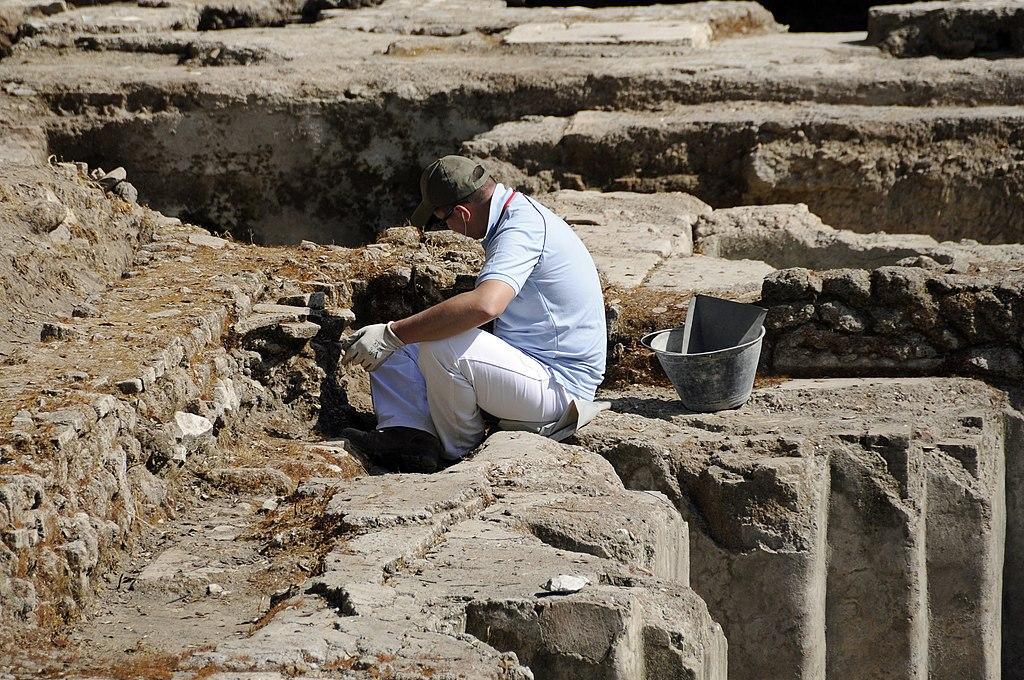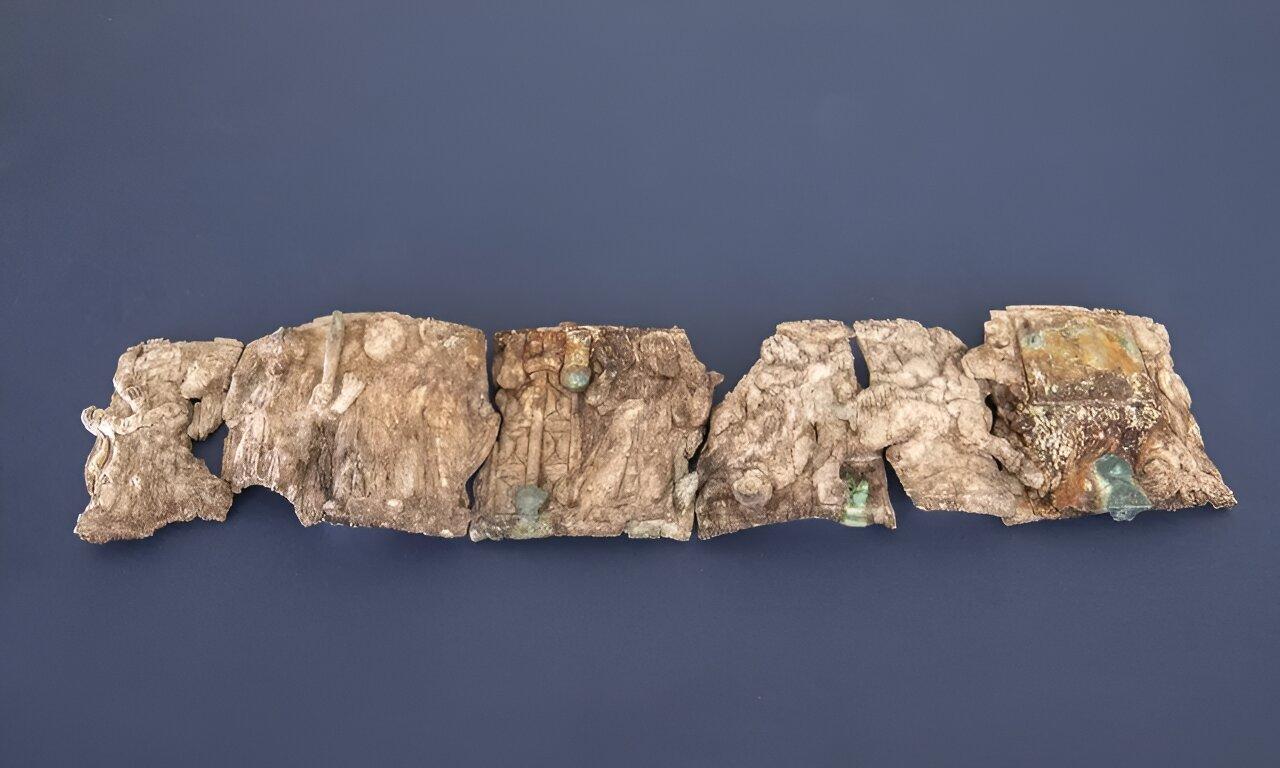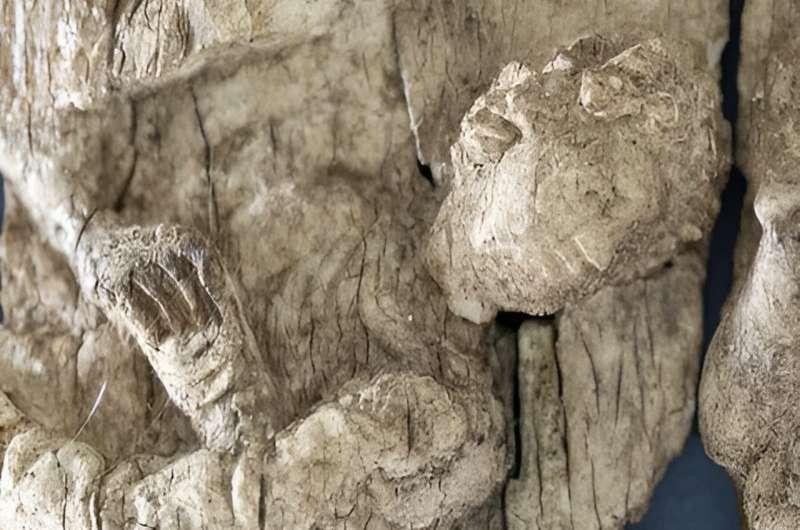Ancient Relic Discovered In Austria- Depicts Moses and Ten Commandments
Archaeologists in Austria were astounded following the discovery of an ancient Christian relic while excavating the ruins of a small church that dates back over 1,400 years.
The artifact was inscribed with various motifs, including the iconic story of the Jewish patriarch Moses and the Ten Commandments alongside several new testament depictions, sparking considerable interest in the theological world.
The Story of Moses
Few figures in the Bible are as well known as Moses, a prophet from the Old Testament. It was Moses who led the Jewish people away from slavery in Egypt before they ventured towards the promised land.

Source: Wikimedia
Upon arriving at Mount Sinai, Moses spoke with God and received two stone tablets inscribed with the ten commands, often called God’s moral laws.
Depictions of Moses and the Ten Commandments
References to Moses’s life and the Ten Commandments appear throughout Christian literature and are depicted in artwork and carvings in distant parts of the world.

Source: Wikimedia
One recent depiction of this was discovered by a team of researchers who were exploring an old Christian church in Irschen, Austria, that was abandoned around 610 CE.
What Did the Researchers Discover?
While excavating the ruins of the church back in 2022, archaeologists came across a small marble shrine hidden beneath an altar.

Source: Wikimedia
Upon further investigation, they unearthed a small, “heavily fragmented” box from within made of ivory and decorated with Christian motifs, per CBS News.
Researchers Shocked by the Discovery
The archaeologists were shocked by the discovery as such an important relic would seldom be left behind when a church was abandoned.

Source: The University of Innsbruck
Despite this, the researchers are captivated by the discovery, which presents a unique opportunity to examine such an ancient relic and potentially shed new light on the evolution of religious beliefs.
First Ivory Box Discovered in Over a Century, Says Researcher
According to Gerald Grabherr, the site’s lead archaeologist, around 40 boxes of a similar nature have been discovered around the world. Yet, the discovery in Austria is the first in over a century.

Source: Freepik
“We know of around 40 ivory boxes of this kind worldwide and, as far as I know, the last time one of these was found during excavations was around 100 years ago – the few pyxes that exist are either preserved in cathedral treasures or exhibited in museums,” he said.
Study of the Relic
After discovering the 1,500-year-old relic, it was taken to the University of Innsbruck for study.

Source: Wikimedia
Despite its fragmented state, researchers have begun the meticulous process of constructing a 3D model of the relic, using every available piece to reveal its complete form.
Several Motifs on the Box
The Austrian box is covered in several motifs, one showing a man with his head turned. In the background, a hand appears to be rising from the sky, and an item is placed between the man’s hands.

Source: University of Innsbruck
“This is the typical depiction of the handing over of the laws to Moses on Mount Sinai, the beginning of the covenant between God and man from the Old Testament,” said Grabherr.
Chariots Drawn to Heaven
The final motif depicts a man riding a chariot with two horses. It also features the hand in the sky like the latter and appears to be pulling the chariot up to the heavens.

Source: The University of Innsbruck
“We assume that this is a depiction of the ascension of Christ, the fulfillment of the covenant with God.”
Very Special Motifs, Says Researcher
The researchers meticulously studied the broken pieces of the box, explaining the connection between scenes from the Old Testament and the New Testament, providing a comprehensive understanding of the artifact.

Source: Freepik
“The depiction of scenes from the Old Testament and their connection with scenes from the New Testament is typical of late antiquity and thus fits in with our pyx; however, the depiction of the Ascension of Christ with a so-called biga, a two-horse chariot, is extraordinary and previously unknown,” said Grabherr said.
What Researchers Discovered at the Site
At the site, researchers discovered the remains of two Christian churches, a cistern, and a plethora of items belonging to the site’s former inhabitants.

Source: Wikimedia
According to Grabherr, sites like this were used by religious practitioners towards the fall of the Roman Empire as they were easy to defend.
The Researchers Will Continue to Examine the Box
Artifacts such as the ivory box discovered in Austria are integral in furthering our understanding of religious beliefs.

Source: Freepik
According to the researchers, they will continue studying the artifact using technological devices such as 3D scanners, which may allow them to discover details previously missed. They will also attempt to discern what kind of marble the box was carved from and if any other materials were used.
